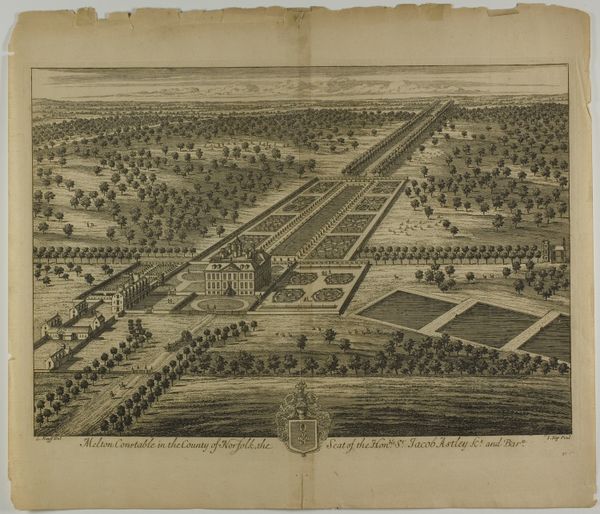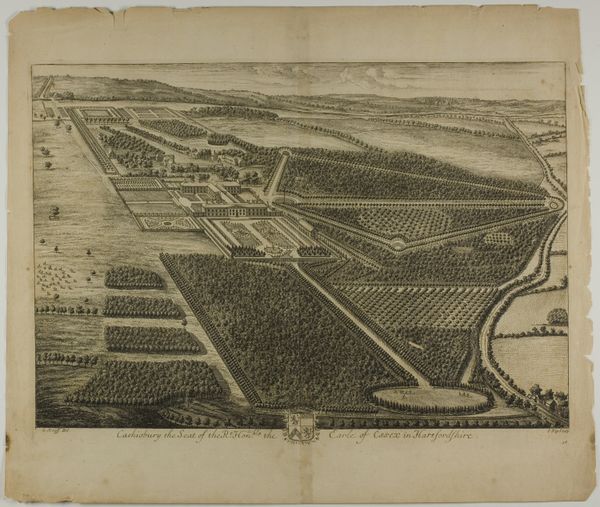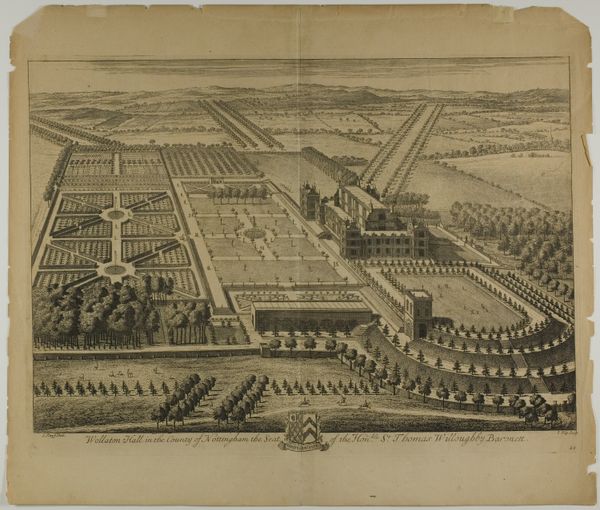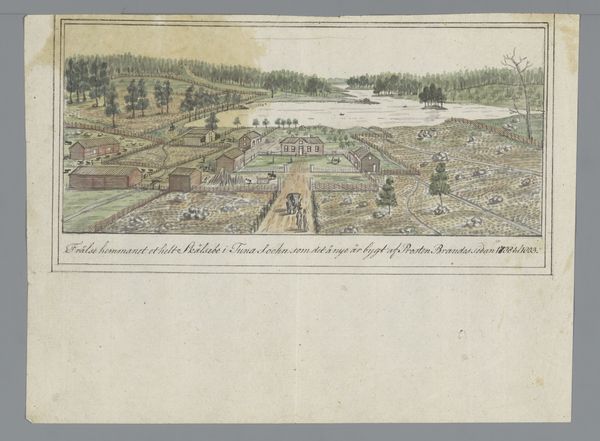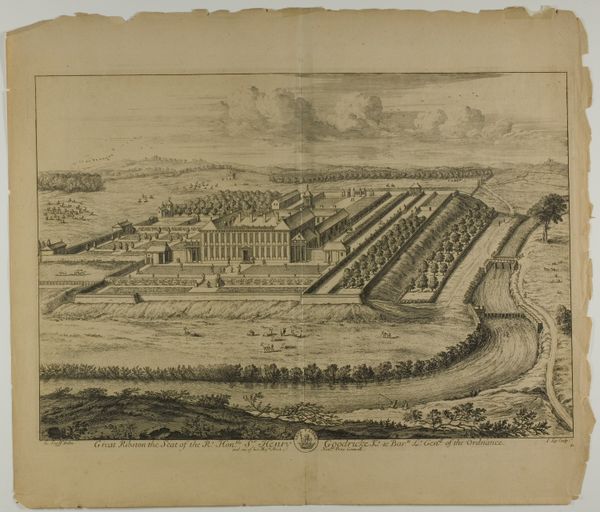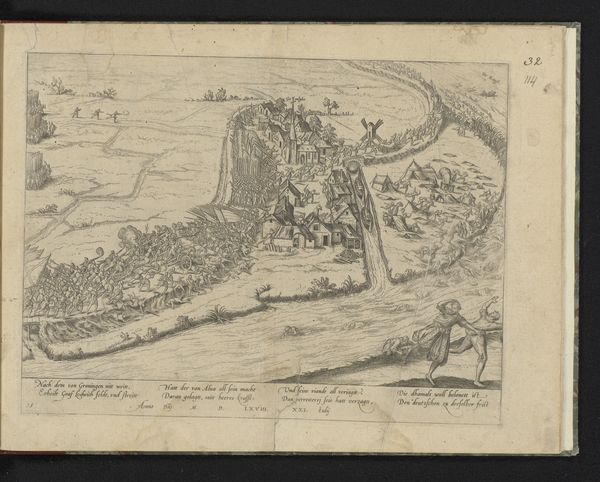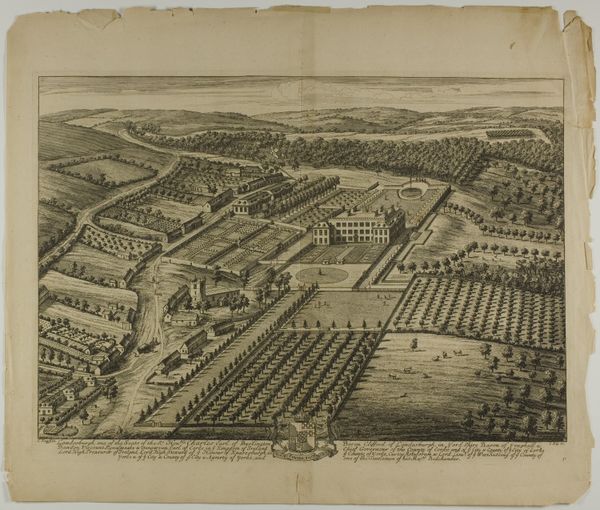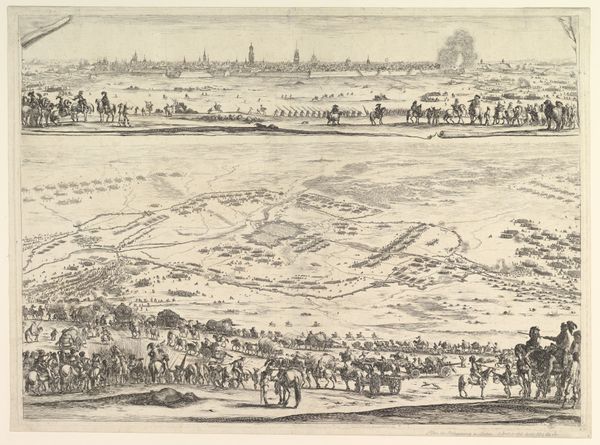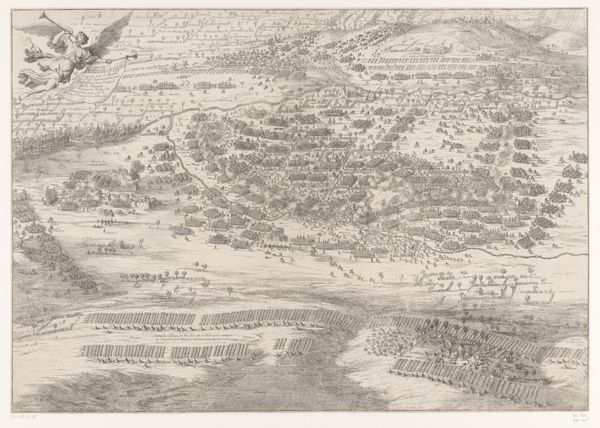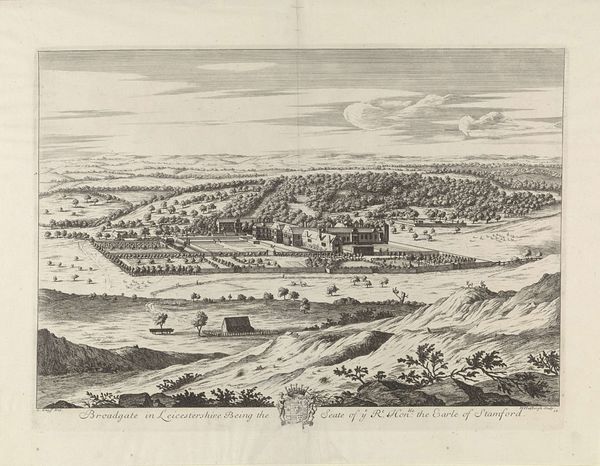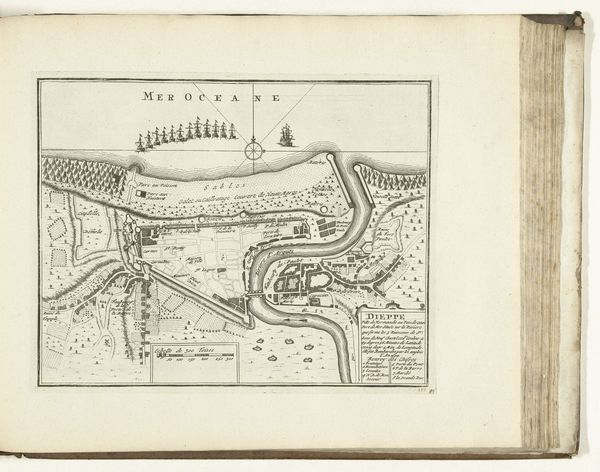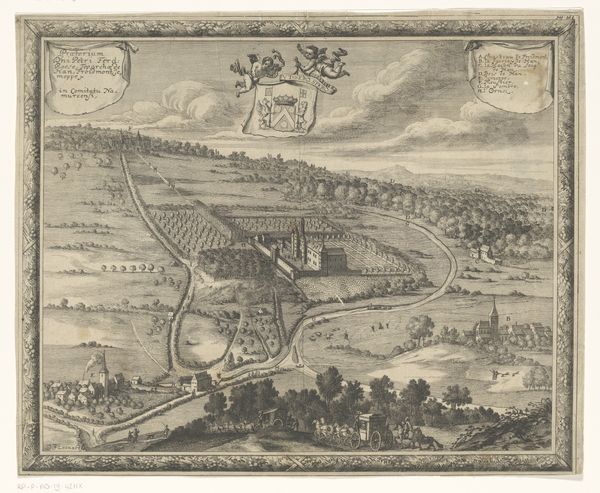
Grimthorp in the County of Lincoln, plate 23 from Britannia Illustrata Possibly 1707
0:00
0:00
drawing, print, etching, paper, engraving
#
drawing
#
baroque
# print
#
etching
#
landscape
#
etching
#
paper
#
cityscape
#
engraving
Dimensions: 347 × 476 mm (image); 360 × 490 mm (plate); 440 × 516 mm (sheet)
Copyright: Public Domain
This print of Grimsthorpe, Lincolnshire, was made by Johannes Kip, probably in the early 1700s, using etching and engraving. Look closely, and you can see how the image is built from a dense network of lines. These were incised into a copper plate with specialized tools, then inked and printed. The act of engraving demands focused labor and great skill; the burin must be pushed through the metal with the heel of the hand, creating curling ribbons of copper as it goes. The precise lines delineate not only the architecture of the manor house, but also the cultivated landscape that surrounds it. The gardens, avenues, and fields speak to a highly controlled environment, a demonstration of wealth and power. These kinds of images played an important role in early modern capitalism, visualizing property and its ability to generate wealth. Ultimately, this print reminds us that even seemingly straightforward images are the product of complex processes, situated within wider social and economic contexts. It challenges us to consider the labor and resources embedded in every artwork, regardless of its apparent simplicity.
Comments
No comments
Be the first to comment and join the conversation on the ultimate creative platform.
